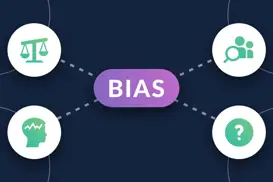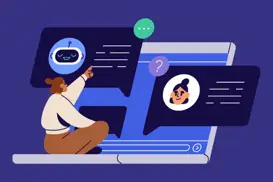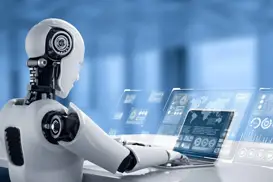Why Hiring Software Can Be Biased
Hiring software serves as a potent ally, streamlining the recruiting process to save businesses time and resources. Yet, this efficiency comes with a caveat – the potential for bias, introducing a risk of unjust hiring outcomes.
Join Aniday to explore the reasons why hiring software can be biased, the impacts of this bias, and the solutions that can be used to reduce it.
What is hiring software?
Integral to modern recruitment, hiring software encompasses the utilization of automated tools and algorithms to streamline the hiring process. Its versatile applications span a range of tasks, including:
-
Screening resumes
-
Scoring candidates
-
Conducting interviews
-
Making hiring decisions
The Benefits of Hiring Software

Hiring software is a powerful tool that can help businesses save time and money by automating many aspects of the recruiting process. Here are some of the benefits of using hiring software:
-
Efficiency and Time Savings: One of the primary benefits of hiring software is its ability to automate repetitive and time-consuming tasks. From sorting resumes to scheduling interviews, automation allows HR professionals to focus on more strategic aspects of recruitment.
-
Improved Candidate Matching: Hiring software leverages algorithms to analyze candidate data and match it with job requirements. This process enhances the likelihood of finding the most suitable candidates quickly and efficiently, thereby improving the overall quality of hires.
-
Data-Driven Decision Making: Hiring software provides valuable insights through data analytics, enabling organizations to make informed decisions. This data-driven approach helps in identifying trends, streamlining recruitment processes, and making strategic workforce planning decisions.
-
Enhanced Candidate Experience: Streamlined communication and automated feedback processes contribute to a positive candidate experience. Candidates receive timely updates on their application status, fostering transparency and building a positive employer brand.
The reason why hiring software can be biased

While acknowledging the benefits of hiring software, it's crucial to recognize that biases can still infiltrate these systems, impacting the fairness of recruitment processes. There are three main reasons why hiring software can be biased:
1. Biases in Training Data
Hiring software learns from biased training data, reflecting any existing biases in that data. For instance, if there are more male applicants in the training data, the software may lean towards recommending male candidates.
Bias creeps into training data through various avenues. Collection methods, like exclusively gathering resumes online, may favor candidates comfortable with technology, potentially skewing towards men. Labeling data, such as qualifying candidates based on GPA, may introduce bias towards those from prestigious universities, potentially favoring white candidates.
2. Bias in the algorithm
The algorithms themselves may harbor biases, influenced by the perspectives and implicit biases of their developers. Developers, consciously or unconsciously, may embed certain preferences or prejudices into the code, affecting how the algorithm interprets and evaluates candidate data. It is essential to scrutinize the algorithmic decision-making process to identify and rectify any unintentional biases that may be present.
3. Bias in the way it is used
Biases can also stem from how hiring software is implemented and used within organizations. Human decision-makers who interpret and act upon the software's recommendations may inadvertently introduce bias. This can occur if users rely too heavily on the software without critically assessing its suggestions or if they misinterpret the algorithm's outputs. Training and education for users are vital to ensure that the implementation process remains free from unintended biases.
Impacts of Biased Hiring Software

Biased hiring software can have profound and multifaceted effects, influencing both candidates and the overall success of businesses.
1. Effects on Candidates
Biased hiring software disproportionately affects certain demographics, leading to various challenges for candidates, including:
-
Underrepresentation: Biases can result in the underrepresentation of specific groups, hindering diversity in the workplace.
-
Discrimination: Candidates may face discriminatory outcomes based on factors unrelated to their qualifications, perpetuating societal inequalities.
-
Diminished Opportunities: Biased algorithms can limit opportunities for candidates by reinforcing pre-existing stereotypes and biases.
2. Effects on Businesses
The impacts extend beyond ethical considerations, influencing the success and reputation of businesses:
-
Lack of Diversity: Biased hiring can contribute to a lack of diversity within the workforce, limiting innovation and creativity.
-
Negative Public Perception: Instances of biased hiring can harm a company's public image, leading to reputational damage and potential customer disapproval.
-
Legal Ramifications: Discriminatory hiring practices may expose businesses to legal consequences, including lawsuits and regulatory scrutiny.
Solutions to reduce biased hiring software
There are a number of things that can be done to reduce biased hiring software, including:
-
Enhance diversity in the training data: A key strategy for mitigating bias in hiring software is to enrich the diversity of the training dataset. This involves incorporating a wide array of candidates representing diverse backgrounds and experiences..
-
Build clear and efficient algorithms: Algorithms should be designed to be as objective as possible. This means avoiding algorithms that rely on subjective factors, such as personal opinions or preferences.
-
Regularly assess and refine hiring software: Ensure the ongoing testing and evaluation of hiring software to detect and rectify biases. Employ diverse methodologies, including blind testing and statistical analysis, to maintain fairness and efficacy.
Looking to the future

As technology advances, the prevalence of artificial intelligence (AI)-driven hiring tools is on the rise. These tools, while promising increased automation in the hiring process, underscore the critical need to address biases.
It's crucial to acknowledge that AI tools are not flawless; they are in a continual learning phase and vulnerable to biases. Employing these tools requires caution and a keen awareness of their limitations.
To mitigate bias in AI-powered hiring tools, a synergistic approach with human judgment is paramount. While AI identifies potential candidates, the final decision-making process still necessitates the nuanced insights and discernment of human judgment.
Conclusion
In summary, Aniday hopes that this blog has answered clearly the reason Why Hiring Software Can Be Biased. By taking steps to address bias in hiring software, organizations can create a more inclusive and efficient recruitment process that aligns with principles of fairness and diversity.
Aniday's HR Services
Headhunting Service
Find and recruit quality candidates in just 1 week! Supported by 40,000 experienced headhunters in IT, Finance, Marketing… capable of recruiting in any region.
Headhunting Service ➔Employer of Record (EOR) Service
On behalf of your business, we recruit employees and handle payroll without the need to establish a company in markets such as Vietnam, Singapore, Malaysia, India, Indonesia…
Employer of Record (EOR) Service ➔